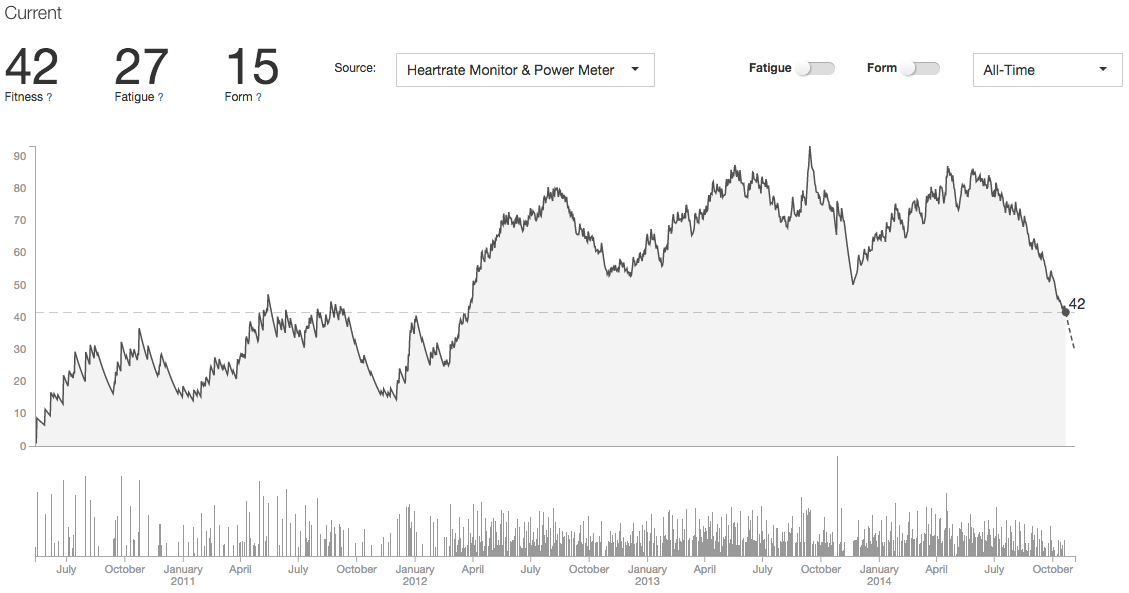What is over-training?
-

As summer approaches it's tempting to cram in the miles, but don't over-do it
-

It could be time to recharge your batteries (Pic: Media24)
-

High Intensity Interval Training has hit the headlines as a quick fitness fix (Pic: Giant-Alpecin)
-

Rafal Majka turns himself inside out (pic: Sirotti)
-

Write down your training plan, and you are more likely to fulfil it (Pic: Media24)
-

The Fitness/Freshness chart is Strava's equivalent of the Training Stress Balance score on Training Peaks
What is over-training?
With winter turning to spring, it’s at this time of year that many riders either emerge from hibernation, or take advantage of the improved weather and longer daylight hours to get more time in on the bike.
Spring training camps, evening rides and long weekend outings all contribute to an increased training load which will help bring about an improvement in form as summer approaches. However, it’s now all about cramming in as many hours on the bike as possible.
We all know that to improve on the bike we need to push ourselves. This means getting out of our comfort zone, riding hard, and making ourselves tired. The body’s natural response to this tiredness is to adapt and become stronger.
However, this adaptation only happens once that training session has finished and we give our body a chance to recover in order to make the adaptations it needs to become stronger. The harder you train, and the further you push your body, the greater the potential adaptations and the greater the possibility for increases in form. Sounds great, right?
However, push yourself too far and you can become ‘over-trained. This is the point at which the amount of recovery needed to adapt to the fatigue induced by training is so great that by the time you have recovered, you have spent such a long period training at a reduced intensity that any potential gains are lost.
As a result, there is a balance to strike between pushing your body to build towards a peak in form and giving it adequate time to recover. Needless to say, there’s little use in riding for hours upon end if you are in a constant state of fatigue and, come race day or your target sportive, you barely have the energy to clip in, let alone ride to your maximum ability.
So, how to you strike that balance? And how can you recognise the signs of over-reaching?





Share